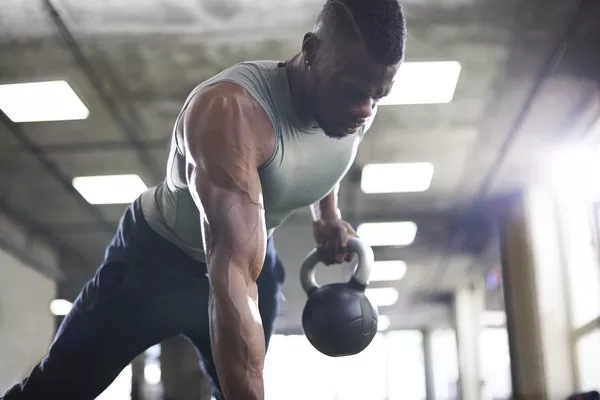Strength training is a fundamental aspect of physical fitness, aimed at enhancing muscular strength and endurance. Traditionally, weightlifting and resistance training have been popular methods for achieving these goals. However, in recent years, boxing has emerged as an unconventional yet effective form of strength training. This article explores the question, “Is boxing good for strength training?” and delves into the benefits of boxing for strength, the specific muscles targeted, safety considerations, and how boxing can be integrated into a well-rounded strength training program.
1. The Benefits of Boxing for Strength Training
Boxing as a strength training method offers several unique benefits. One of the main advantages of boxing workouts is the engagement of multiple muscle groups simultaneously. The movements involved in boxing, such as punching, footwork, and defensive maneuvers, require the use of the upper body, lower body, and core muscles. Consequently, boxers often develop functional strength and overall muscular balance.
Another significant benefit is improved cardiovascular fitness. Boxing involves intense bursts of activity, leading to an elevated heart rate and increased oxygen consumption. As a result, the cardiovascular system becomes more efficient, enhancing endurance and stamina during other physical activities.
Furthermore, boxing is an excellent calorie-burning exercise. The high-intensity nature of boxing workouts can help individuals achieve weight loss or maintain a healthy body weight. It can also contribute to the reduction of body fat, particularly when combined with a balanced diet.
2. Specific Muscles Targeted in Boxing
Boxing workouts target a wide range of muscles throughout the body. Here are the key muscle groups involved in boxing training:
Shoulders and Arms: Throwing punches, especially jabs, hooks, and uppercuts, significantly engage the deltoids, biceps, and triceps.
Core Muscles: The rotational movements involved in throwing punches engage the core muscles, including the rectus abdominis, obliques, and transverse abdominis, leading to increased core strength and stability.
Legs and Glutes: Boxing footwork and stance require lower body engagement, activating muscles such as quadriceps, hamstrings, calves, and gluteal muscles.
Back and Chest: The act of punching also involves the activation of muscles in the back and chest, including the latissimus dorsi and pectoralis major.
Cardiovascular System: Boxing workouts elevate the heart rate and engage the cardiovascular system, leading to improved endurance and aerobic capacity.
3. Safety Considerations of Boxing
While boxing can be an effective strength training method, certain safety considerations must be addressed to prevent injuries and ensure a safe training experience:
Proper Technique: Learning proper boxing technique is essential to avoid strain or injury. Beginners should seek guidance from certified boxing trainers to ensure correct form and minimize the risk of harm.
Hand Wraps and Gloves: Wearing hand wraps and appropriate boxing gloves provides essential protection for the hands and wrists during training sessions. This gear helps reduce the impact on the delicate bones and joints.
Warm-up and Cool-down: As with any physical activity, warming up before boxing and cooling down afterward are crucial. Adequate warm-up prepares the muscles and joints for intense movements, while cooling down helps in reducing muscle soreness and aiding recovery.
Respect Personal Limits: Individuals should avoid overexertion and respect their physical limits. Pushing beyond one’s capabilities can lead to injuries, muscle strains, or even more severe health issues.
4. Integrating Boxing into a Strength Training Program
To maximize the benefits of boxing for strength training, it can be integrated into a well-rounded workout program. Here are some strategies for incorporating boxing into a strength training routine:
Circuit Training: Create a circuit workout that alternates between boxing exercises and strength training exercises using resistance equipment. This combination allows for a full-body workout that targets both strength and cardiovascular fitness.
Cross-Training: Add boxing sessions to your regular strength training regimen. By alternating between boxing and weightlifting, you can achieve a balanced approach to overall fitness and avoid workout plateaus.
Interval Training: Implement high-intensity interval training (HIIT) during boxing sessions. Short bursts of intense punching combinations followed by brief rest periods can boost cardiovascular fitness and improve anaerobic capacity.
Shadow Boxing: Incorporate shadow boxing sessions into your routine, focusing on correct technique and form. Shadow boxing is an effective way to improve boxing skills and increase muscle engagement without the use of equipment.
Partner Drills: Work with a partner to practice defensive movements, sparring, and mitt work. Partner drills enhance coordination, timing, and overall boxing proficiency.
Conclusion
Boxing can indeed be a valuable addition to a strength training program. Its ability to engage multiple muscle groups, improve cardiovascular fitness, and aid in weight management makes it a versatile and effective workout option. However, it’s essential to prioritize safety and learn proper technique to prevent injuries. Integrating boxing into a well-rounded strength training routine can enhance overall fitness and bring about a sense of accomplishment and empowerment in individuals seeking to achieve their fitness goals. As with any new exercise regimen, it is advisable to consult with a healthcare professional or fitness expert to determine its suitability for individual fitness levels and goals.
FAQs
1. Is boxing a good form of strength training?
Yes, boxing can be an excellent form of strength training. It engages multiple muscle groups, including the upper body, lower body, and core, leading to improved functional strength and muscular balance. Additionally, the intense nature of boxing workouts can also enhance cardiovascular fitness and contribute to weight management.
2. Can boxing help build muscle mass?
While boxing primarily focuses on functional strength and endurance, it can contribute to some muscle growth, especially in the shoulders, arms, and core. However, for significant muscle hypertrophy, traditional resistance training and weightlifting exercises may be more effective.
3. Is boxing suitable for beginners?
Boxing can be suitable for beginners, but it is essential to start with proper instruction and guidance from certified trainers. Learning the correct technique and form is crucial to prevent injuries and ensure a safe training experience.
4. Can boxing cause injuries?
Like any physical activity, boxing carries the risk of injuries, especially if proper precautions are not taken. Common boxing injuries include hand and wrist strains, shoulder injuries, and muscle sprains. Using hand wraps, boxing gloves, and focusing on proper technique can reduce the likelihood of injuries.
5. Can boxing help with weight loss?
Yes, boxing can aid in weight loss due to its high-intensity nature, which burns a significant number of calories. When combined with a balanced diet, regular boxing workouts can support weight management goals.
6. Can I integrate boxing into my current strength training program?
Absolutely! Boxing can be integrated into a strength training program through circuit training, cross-training, or interval training. Adding boxing sessions to your routine can provide variety, challenge different muscle groups, and improve overall fitness.
7. Do I need any special equipment for boxing workouts?
For boxing workouts, you will need essential gear such as hand wraps and boxing gloves to protect your hands and wrists. Additionally, a punching bag, focus mitts, or a training partner can enhance the effectiveness of your boxing sessions.
8. How often should I incorporate boxing into my routine?
The frequency of boxing workouts depends on your fitness level, goals, and overall training program. Beginners may start with 1 to 2 sessions per week and gradually increase the frequency as they become more comfortable with the movements.
9. Can boxing help with stress relief and mental well-being?
Yes, boxing can be an effective way to relieve stress and improve mental well-being. The physical activity and focus required during boxing can release endorphins, reducing stress and promoting a sense of accomplishment.
10. Is sparring necessary for boxing strength training?
Sparring is not necessary for strength training through boxing. While it can enhance boxing skills and defensive movements, non-contact boxing workouts, such as shadow boxing and focus mitt drills, can still provide significant strength training benefits without the risk of injury from full-contact sparring.
[inline_related_posts title=”Related Topics” title_align=”left” style=”list” number=”3″ align=”none” ids=”1254,1222,1192″ by=”categories” orderby=”rand” order=”DESC” hide_thumb=”no” thumb_right=”no” views=”no” date=”yes” grid_columns=”1″ post_type=”” tax=””]


































